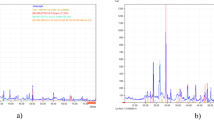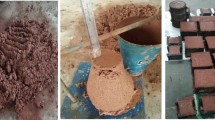Abstract
Together with about 1180 million tons of hot metal (2017) about 380 million tons of blast furnace slag are produced yearly worldwide. Most of it (about 280 million tons) is quenched forming the glassy granulated blast furnace slag (GBS). For more than 130 years, this by-product is used as a clinker substitute in cement and concrete. Many approaches exist to evaluate the reactivity of ground granulated blast furnace slag (GGBS) in cementitious systems based on glass content, chemical composition, fineness, etc. But all approaches fail to define a suitable tool for judging an unknown GBS in a way that its strength contribution can be predicted. Only a rough differentiation might be possible. Compared to other parameters influencing GBS reactivity, the thermal history and the glass structure are mostly not investigated so far. However, from thermodynamic and kinetic points of view it is obvious that the thermal history of the slag should have a significant influence on glass structure and reactivity. The basic idea of the research project was to use analytical techniques being already established, for example, lime–soda–silica glasses. The differential scanning calorimetry and viscosity measurements have been combined for GBS characterization in order to measure the fictive temperature Tf (glass transition temperature on cooling during industrial quenching process) and to calculate retroactively the unknown cooling rates of liquid slags. Using these methods in combination with classical cementitious tests, it was possible to verify a correlation between the thermal history of GBS and its reactivity in a cementitious system.



Adapted from Ref. [6]













Similar content being viewed by others
References
Ehrenberg A (2010) Current developments in the manufacturing and utilization of granulated blast furnace slag. ZKG Int 63(3):52–66
Schröder F (1968) Slags and slag cement. In: Proceedings of the 5th International Congress on the Chemistry of Cement, Tokyo (Japan), vol 4, pp 149–199
Smolczyk HG (1980) Slag structure and identification of slags. In: Proceedings of the 7th International Congress on the Chemistry of Cement, Paris (France), vol III, pp III-1/3–III-1/17
Ehrenberg A (2017) Granulated blast furnace slag—lab-scale investigations vs. reality. In: Proceedings of the 5th Slag Valorisation Symposium, Leuven (Belgium), pp 263–266
Ehrenberg A (2015) Granulated blast furnace slag—from laboratory into practice. In: Proceedings of the 14th International Congress on the Chemistry of Cement, Beijing (China)
Moynihan CT, Easteal AJ, Wilder J, Tucker J (1974) Dependence of the glass transition temperature on heating and cooling rate. J Phys Chem 78(26):2673–2677
Drissen P (1995) Determination of the glass content in granulated blastfurnace slag. Zement-Kalk-Gips 48(1):59–62
Pronina N, Krüger S, Bornhöft HJ, Deubener J, Ehrenberg A (2018) Cooling history of a wet-granulated blast furnace slag. J Non-Cryst Solids 499:344–349
Guo X, Potuzak M, Mauro JC, Allan DC, Kiczenski TJ, Yue Y (2011) Unified approach for determining the enthalpic fictive temperature of glasses with arbitrary thermal history. J Non-Cryst Solids 357:3230–3236
Mudersbach D, Geiseler J, Kühn M (1999) Optimisation of mathematical models for viscosity calculation of slags (in German). Report des Forschungsinstituts 6(2):9–12
Acknowledgements
The IGF Project No. 19416 of the VDEh-Gesellschaft zur Förderung der Eisenforschung mbH has been funded by the AiF within the program for sponsorship by Industrial Joint Research (IGF) of the German Federal Ministry of Economic Affairs and Energy based on an enactment of the German Parliament. The authors are thankful for the support.
Author information
Authors and Affiliations
Corresponding author
Ethics declarations
Conflict of interest
The authors declare that they have no conflict of interest.
Additional information
The contributing editor for this article was Yongxiang Yan.
Publisher's Note
Springer Nature remains neutral with regard to jurisdictional claims in published maps and institutional affiliations.
Rights and permissions
About this article
Cite this article
Ehrenberg, A., Romero Sarcos, N., Hart, D. et al. Influence of the Thermal History of Granulated Blast Furnace Slags on Their Latent Hydraulic Reactivity in Cementitious Systems. J. Sustain. Metall. 6, 207–215 (2020). https://doi.org/10.1007/s40831-020-00269-4
Published:
Issue Date:
DOI: https://doi.org/10.1007/s40831-020-00269-4




